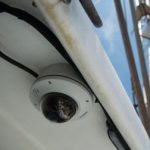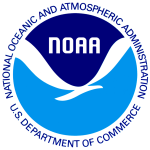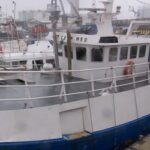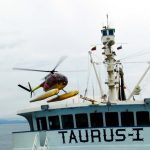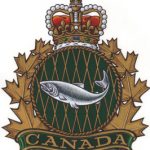Daily Archives: September 5, 2016
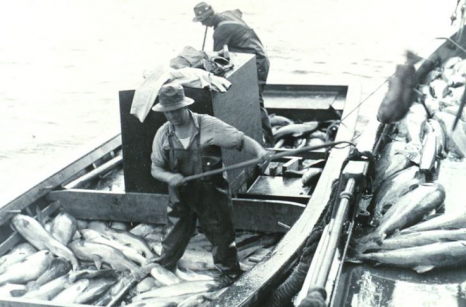
Netting Alaska’s spoils – Craig Medred
Fifty years ago with runs of most Cook Inlet salmon failing, every fisherman – commercial, subsistence and sport – paid the price of conservation. But once the runs were rebuilt in the 1980s, commercial fishermen working the waters at the doorstop of Alaska’s urban core reaped nearly all the benefits. And average Alaskans kept paying conservation costs imposed by restrictive fishing regulations dating back to the 1950s. This is one unavoidable conclusion stemming from weeks of research into “Alaska’s greatest gift,” a four-part series detailing the history of Cook Inlet fishing since just before Statehood on through the creation of limited entry and the state’s fisheries rehabilitation and enhancement program to the current day. Read the rest here 14:29
Read Pt.1 Fishing, a very special business. Click here Read Pt.2 the fall and rise of Alaska fisheries. Click here Read Pt.3 Carving up the pie Click here
Skipper fined $25k for fishing in Wade Doaks Poor Knights Islands private playground
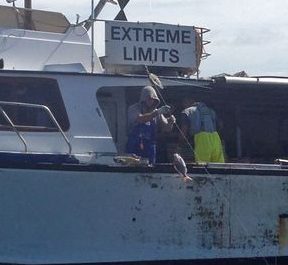 An ocean conservationist instrumental in setting up the Poor Knights Islands marine reserve has welcomed the more than $25,000 fines and costs imposed on a commercial fisherman caught fishing in the prohibited area. Wade Doak said the sentencing of Ty Thomas McQuarrie in the Whangarei District Court on Friday vindicated Northlanders who over the years have been concerned about fishing in the area which resulted in a near-depletion of fish stocks. McQuarrie, 26, of Kaitaia admitted to one charge of being a commercial fisherman who took fish by long line within one nautical mile from the mean high water mark of the reserve. McQuarrie was the skipper of Extreme Limits, a commercial fishing vessel using bottom longlining. The vessel is owned by Wild Fish (NZ). Conservationist Wade Doak said: “One episode like that shows what [would happen] if it was not severely policed.” Read the story here 13:07
An ocean conservationist instrumental in setting up the Poor Knights Islands marine reserve has welcomed the more than $25,000 fines and costs imposed on a commercial fisherman caught fishing in the prohibited area. Wade Doak said the sentencing of Ty Thomas McQuarrie in the Whangarei District Court on Friday vindicated Northlanders who over the years have been concerned about fishing in the area which resulted in a near-depletion of fish stocks. McQuarrie, 26, of Kaitaia admitted to one charge of being a commercial fisherman who took fish by long line within one nautical mile from the mean high water mark of the reserve. McQuarrie was the skipper of Extreme Limits, a commercial fishing vessel using bottom longlining. The vessel is owned by Wild Fish (NZ). Conservationist Wade Doak said: “One episode like that shows what [would happen] if it was not severely policed.” Read the story here 13:07

At Point Judith, Capturing The Fishing Industry’s Past and Present
Fishermen and industry advocates say there’s a real hunger among people to learn more about how fishermen do what they do. That’s why they’re planning to install interpretive signs around the fishing docks at Point Judith to answer people’s questions. “Those signs will speak to the variety of seafood landed in this port, some of the methods that fishermen use to catch that seafood, and all the support businesses,” said Sarah Schumann, one of the project organizers. Those support businesses include seafood processors and the bait and fuel industries at Point Judith. The Point Judith fishing port is considered the top port along the eastern seaboard for landing squid, adds Captain Rodman Sykes, who has been fishing for nearly 50 years. “I don’t think a lot of people realize that so much happens right in this little neighborhood we’ve got here and to be able to explain it to them better would be a help,” said Sykes. Audio, Read the rest here 12:17
WWF calls for suspension of commercial tuna fishing
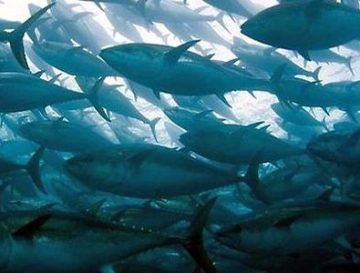 WWF is calling for the immediate suspension of commercial fishing of the Pacific bluefin tuna stock which it says is teetering on the edge of collapse due to what it calls the repeated inaction of responsible bodies. It said that the call follows another failure to agree on an urgently needed recovery plan to save bluefin tuna by Members of the Northern Committee (NC) of the Western and Central Pacific Fisheries Commission (WCPFC). Dr Aiko Yamauchi, the leader of the Oceans and Seafood Group, WWF Japan said: “This is the only way to end overfishing, and to provide hope for a future recovery of the stock. Read the rest here 11:33
WWF is calling for the immediate suspension of commercial fishing of the Pacific bluefin tuna stock which it says is teetering on the edge of collapse due to what it calls the repeated inaction of responsible bodies. It said that the call follows another failure to agree on an urgently needed recovery plan to save bluefin tuna by Members of the Northern Committee (NC) of the Western and Central Pacific Fisheries Commission (WCPFC). Dr Aiko Yamauchi, the leader of the Oceans and Seafood Group, WWF Japan said: “This is the only way to end overfishing, and to provide hope for a future recovery of the stock. Read the rest here 11:33
Fishing rights restored in changes to marine parks in Queensland and Western Australia
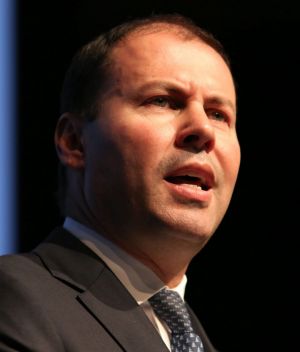 Commercial fishing rights will be reinstated, conservation zones expanded and new limits put on oil and gas exploration following a review of the controversial federal network of marine parks. Fishing rights will be restored principally in Queensland and Western Australia for commercial and recreational fishers, potentially saving millions of dollars in compensation. But after a long review Australia’s world-leading network of marine-protected areas remains largely intact. Fishing groups had complained about the process which led to the creation of the protected areas, claiming it had not been “science based”. But two reviews released yesterday found there had been good consultation on the original proposes and a sound scientific base to the reserve network. Read the rest here 10:56
Commercial fishing rights will be reinstated, conservation zones expanded and new limits put on oil and gas exploration following a review of the controversial federal network of marine parks. Fishing rights will be restored principally in Queensland and Western Australia for commercial and recreational fishers, potentially saving millions of dollars in compensation. But after a long review Australia’s world-leading network of marine-protected areas remains largely intact. Fishing groups had complained about the process which led to the creation of the protected areas, claiming it had not been “science based”. But two reviews released yesterday found there had been good consultation on the original proposes and a sound scientific base to the reserve network. Read the rest here 10:56
Grieg Aquaculture in Placentia Bay: Letter: Please rethink salmon aquaculture project, Scott Roloson
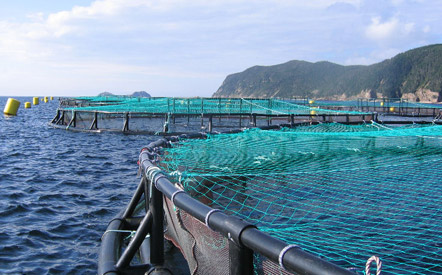 The province of Newfoundland and Labrador is among the last wild Atlantic salmon frontiers in North America. Newfoundland and Labrador possesses over 60 per cent of North American salmon rivers. We believe that the long-term socioeconomic value of recreational and First Nations’ food and ceremonial salmon fisheries are being overlooked. The recreational fishery contributes over $27 million to the province per year. Considering the Atlantic salmon is an economic driver and a symbolic icon of Newfoundland and Labrador culture, it would be imprudent to approve any aquaculture development without thorough regulatory and scientific review.,, In addition to the direct effect of genetic contamination, sea cage aquaculture also poses an unacceptable risk of disease transmission to wild fish migrating in the vicinity of cage sites. We believe that the proponent of this project has merely paid lip service to the real, impending ecological consequences of this development. Read the letter here 10:25
The province of Newfoundland and Labrador is among the last wild Atlantic salmon frontiers in North America. Newfoundland and Labrador possesses over 60 per cent of North American salmon rivers. We believe that the long-term socioeconomic value of recreational and First Nations’ food and ceremonial salmon fisheries are being overlooked. The recreational fishery contributes over $27 million to the province per year. Considering the Atlantic salmon is an economic driver and a symbolic icon of Newfoundland and Labrador culture, it would be imprudent to approve any aquaculture development without thorough regulatory and scientific review.,, In addition to the direct effect of genetic contamination, sea cage aquaculture also poses an unacceptable risk of disease transmission to wild fish migrating in the vicinity of cage sites. We believe that the proponent of this project has merely paid lip service to the real, impending ecological consequences of this development. Read the letter here 10:25
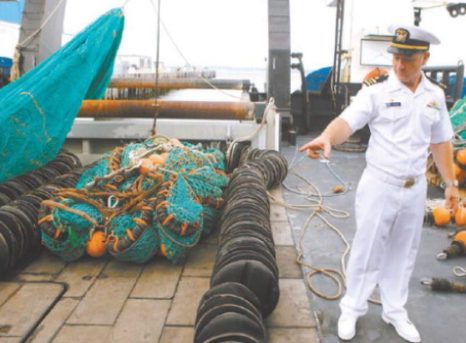
NOAA ship Bigelow back after extensive trip
A team of scientists that just completed a 54-day trip at sea aboard the 209-foot National Oceanic and Atmospheric Administration research vessel Henry B. Bigelow, which was welcomed back home Friday at a ceremony that featured U.S. Sen. Jack Reed, D-R.I.; Rear Adm. Anita Lopez, deputy director for operations in NOAA’s Office of Marine and Aviation Operations; and Lt. Cmdr. Jeffrey Taylor, Bigelow’s commanding officer, as the speakers.,, “We were collecting visual sightings of whales, dolphins, porpoises, seals, turtles, sea birds and larger fish that come to the surface, like tuna,” Palka said about the recent journey.,, The ship’s next mission will be an autumn bottom trawl survey that begins the day after Labor Day and will mean 70 days at sea, bringing up ground fish such as flounder, fluke, cod, halibut, haddock and other species for study. Besides the 16 crew members, there will be 17 scientists on the voyage. Read the story here 10:00
The latest on Post-Tropical Cyclone Hermine – Gradual weakening is forecast to begin by Tuesday morning
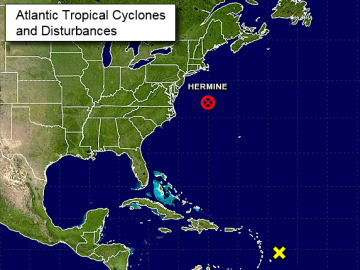 At 800 AM AST (1200 UTC), the center of Post-Tropical Cyclone Hermine was located near latitude 37.9 North, longitude 68.3 West. The post-tropical cyclone is drifting toward the north near 3 mph (6 km/h). A gradual turn toward the north-northwest and northwest is expected to occur this afternoon and tonight. A northeastward motion is expected to begin by Tuesday night. On the forecast track, the center of Hermine will meander slowly offshore of the mid-Atlantic coast for the next couple of days. Maximum sustained winds are near 70 mph (110 km/h) with higher gusts. Hermine should remain near hurricane strength through tonight. Gradual weakening is forecast to begin by Tuesday morning. Tropical-storm-force winds extend outward up to 230 miles (370 km) from the center. The estimated minimum central pressure is 997 mb (29.44 inches). Read the rest here 09:28
At 800 AM AST (1200 UTC), the center of Post-Tropical Cyclone Hermine was located near latitude 37.9 North, longitude 68.3 West. The post-tropical cyclone is drifting toward the north near 3 mph (6 km/h). A gradual turn toward the north-northwest and northwest is expected to occur this afternoon and tonight. A northeastward motion is expected to begin by Tuesday night. On the forecast track, the center of Hermine will meander slowly offshore of the mid-Atlantic coast for the next couple of days. Maximum sustained winds are near 70 mph (110 km/h) with higher gusts. Hermine should remain near hurricane strength through tonight. Gradual weakening is forecast to begin by Tuesday morning. Tropical-storm-force winds extend outward up to 230 miles (370 km) from the center. The estimated minimum central pressure is 997 mb (29.44 inches). Read the rest here 09:28
Larry the lobster strips for the camera.
 Christa Sandall knows lobsters. As an interpreter at the Bonne Bay Marine Station in Norris Point, she spends a lot of time with the animals in the tanks and she knows when they’re acting unusual. So when she saw resident crustacean Larry the Lobster “pacing around his tank,” she knew something was up. “In each lobster tank, they have a little house and usually they’re hid right under there. But he was out kinda pacing back and forth in his tank. Actually it looked like he was doing a little dance or something like that, ” Sandall said. “That’s when I noticed his carapace, his kinda shell, had lifted off a little bit.” Sandall says most lobsters moult every one to two years as they grow larger. But witnessing it for yourself is actually pretty rare — unless of course the lobster lives at your work place in a glass tank. Watch the video, read the rest here 08:45
Christa Sandall knows lobsters. As an interpreter at the Bonne Bay Marine Station in Norris Point, she spends a lot of time with the animals in the tanks and she knows when they’re acting unusual. So when she saw resident crustacean Larry the Lobster “pacing around his tank,” she knew something was up. “In each lobster tank, they have a little house and usually they’re hid right under there. But he was out kinda pacing back and forth in his tank. Actually it looked like he was doing a little dance or something like that, ” Sandall said. “That’s when I noticed his carapace, his kinda shell, had lifted off a little bit.” Sandall says most lobsters moult every one to two years as they grow larger. But witnessing it for yourself is actually pretty rare — unless of course the lobster lives at your work place in a glass tank. Watch the video, read the rest here 08:45

































